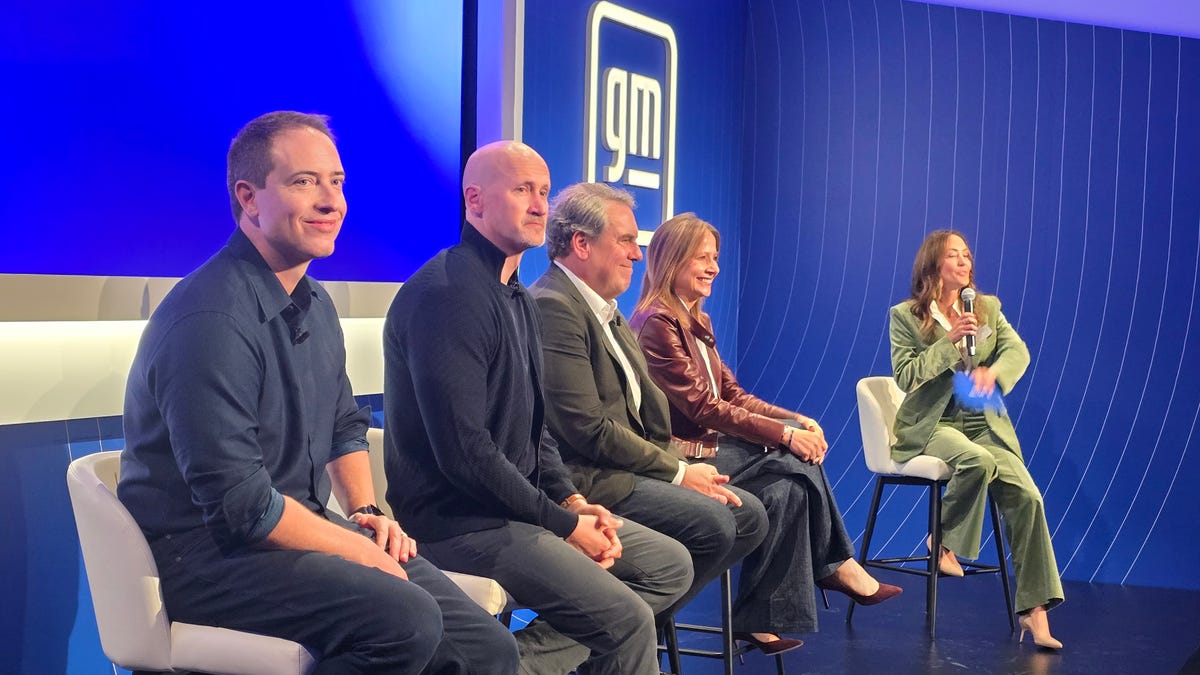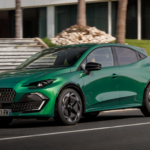NEW YORK — General Motors said it is on the cusp of eyes-free driving and a unified software platform for its vehicles, two long-awaited initiatives the automaker poured billions of dollars into achieving while leaning heavily on Silicon Valley expertise.
The wide-scale advancement of artificial intelligence expedited several key projects involving software, an area where the automaker has repeatedly faltered, as well as plans to launch robots in manufacturing plants this year.
GM CEO Mary Barra and other senior leaders unveiled a series of AI-enabled initiatives at a news media event Oct. 22 in midtown Manhattan that the company called “GM Forward.”
At the event, GM revealed that its first eyes-off capable vehicle is slated to hit dealerships in 2028, debuting on the Cadillac Escalade IQ electric SUV.
Alongside its most advanced driver assist system ever, the Escalade IQ also will be the first on GM’s entirely new software platform.
GM said the new software architecture will soon be standard on both EVs and gas-powered vehicles and streamlined, uniting every major system from propulsion and steering to infotainment and safety on a single, high-speed computing core.
The 2026 Escalade IQ starts at $127,405.
Though some of GM’s announcements won’t be seen in vehicles for a few years, consumers will be able to sample “conversational” AI as early as 2026 through a partnership with Google Gemini. Customers will be able to ask questions audibly and get responses from Google while driving.
Former Apple engineering leader Dave Richardson, senior vice president of software and services engineering, told reporters that the partnership is a stopgap until GM is able to integrate its own proprietary AI system directly into its vehicles connected by OnStar.
That future tech, Richardson said, would allow the vehicle to describe new features directly to drivers, identify and explain maintenance issues, and even give restaurant recommendations and directions.
“It’s practical AI that makes your life better,” Richardson said.
GM also touted its state-of-the-art robotics it plans to deploy in the manufacturing process this year. Called cobots, or “collaborative robots,” they are designed to work along with human employees by undertaking a single-use job function ― but GM hopes to expand these cobots to take on more complex work in future.
GM builds and trains its non-humanoid cobots at its Autonomous Robotics Center (ARC) in Warren, Michigan, and at its sister lab in Mountain View, California, that employ more than 100 roboticists, AI engineers, and hardware specialists.
GM said the technology and validation frameworks it absorbed from the self-driving startup Cruise allowed it to more quickly advance its existing advanced driver assist system, Super Cruise.
Currently, SuperCruise, which GM launched, is available on 23 GM vehicle models.
“From an expansion, it will be faster than SuperCruise,” Barra said. “This is something you will see us roll out much much faster.”
According to the company, GM has mapped 600,000 miles of North American roads where drivers can navigate hands-free. In these select spaces, Super Cruise customers have driven 700 million miles without a single reported crash attributed to the system.
Sterling Anderson, GM executive vice president, global product and chief product officer, said the advancement would be a “cornerstone” of the company’s business moving forward.
“The system is developed on AI that’s been trained and fine-tuned with real-world data,” Anderson said, adding that the increased automation in SuperCruise will start with highway driving. “From there, we’ll expand to urban environments, ultimately enabling your vehicle to handle errands while you focus on more important things.”
GM folded Cruise this year and consolidated remaining employees into engineering teams dedicated to increasing driver assist features in personal cars rather than commercial options like robotaxis. Folding in the company allowed GM to leverage more than 5 million fully driverless miles of experience into its system.
News of GM’s next-generation software platform has been long awaited. Software glitches forced the company to pause sales of its Chevrolet Blazer EV in December 2023 and its profitable gasoline-powered midsize pickups.
But GM previewed some of its software plans at a news media event in May, when Richardson said the new electrical architecture offers greater potential to not only improve customer satisfaction but break into new revenue streams. The company’s current electrical architecture — called VIP or Global B — is considered a “software-defined” platform, but GM said the next generation will allow the company to improve vehicles faster through cloud-based, over-the-air updates more in line with what customers expect in other areas in their lives.
The new system is a more streamlined computer with more robust computing power: 10 times more over-the-air software update capacity, 1,000 times more bandwidth, and up to 35 times more AI performance for autonomy and advanced features.
“This architecture will support massive software sharing across our entire portfolio … and the payoff is massive,” Richardson said. “For customers, it means vehicles are always up-to-date.”
Jackie Charniga covers General Motors for the Free Press. Reach her at jcharniga@freepress.com.












